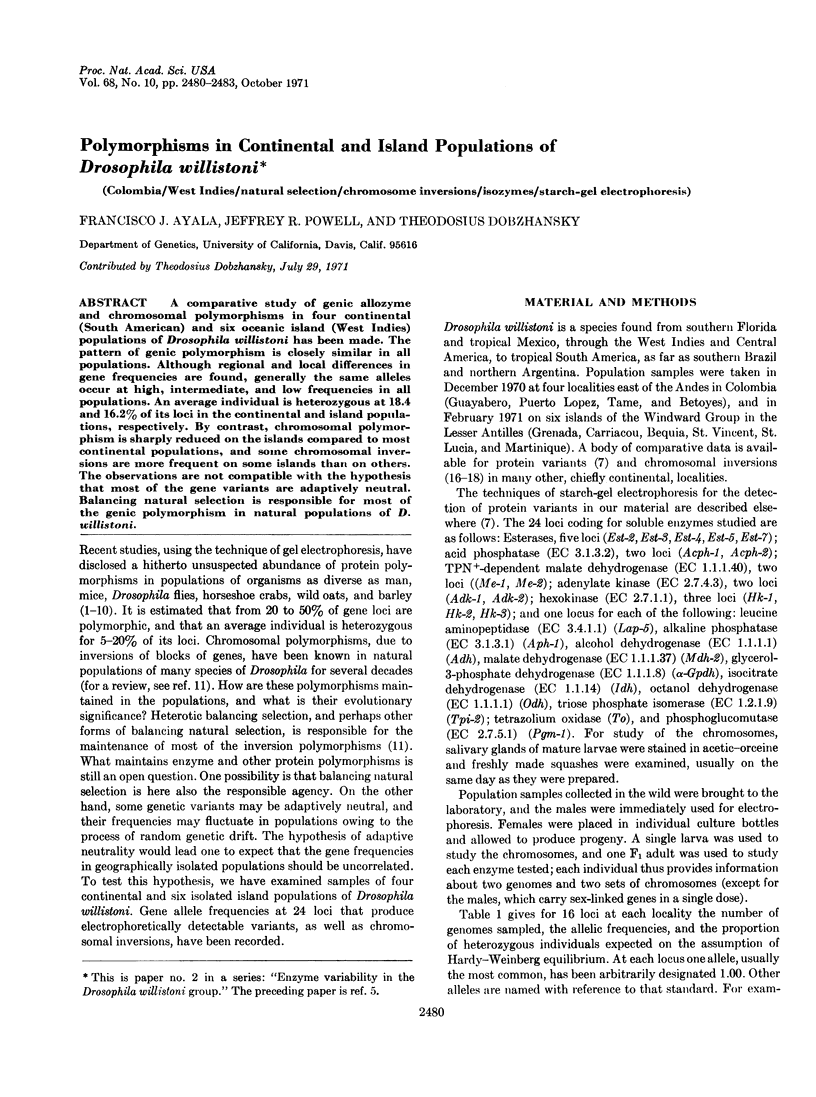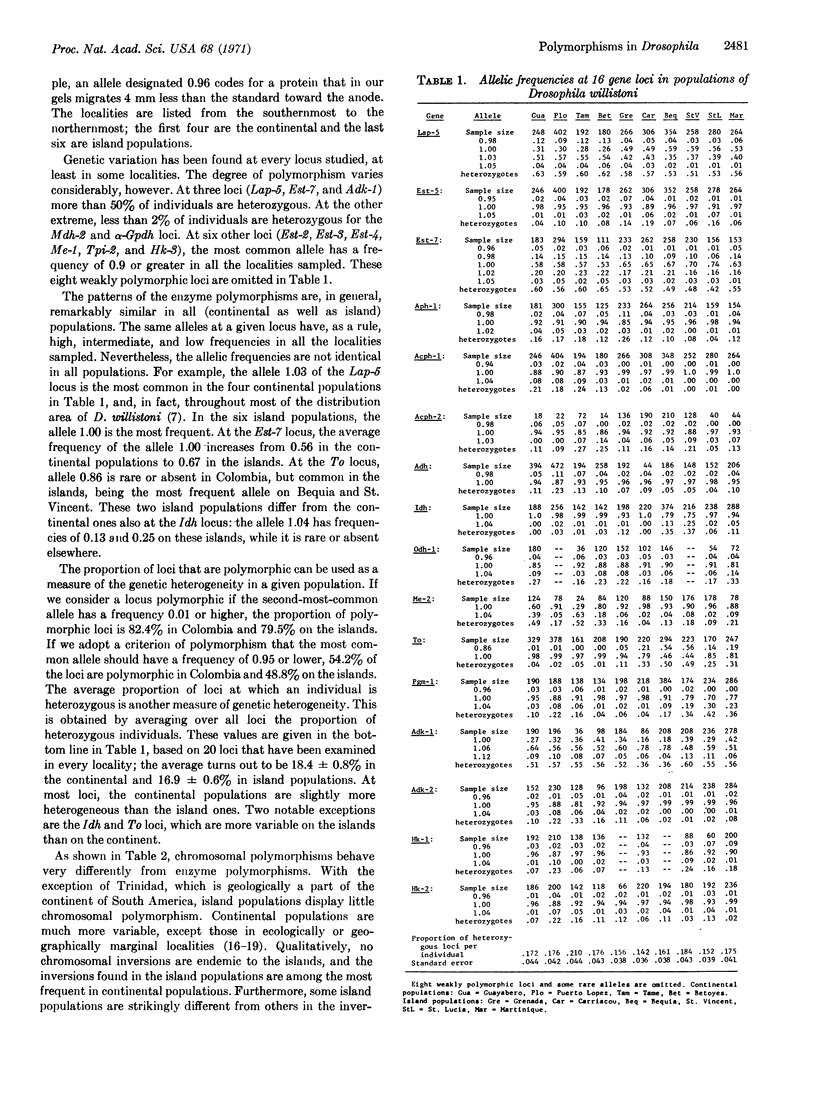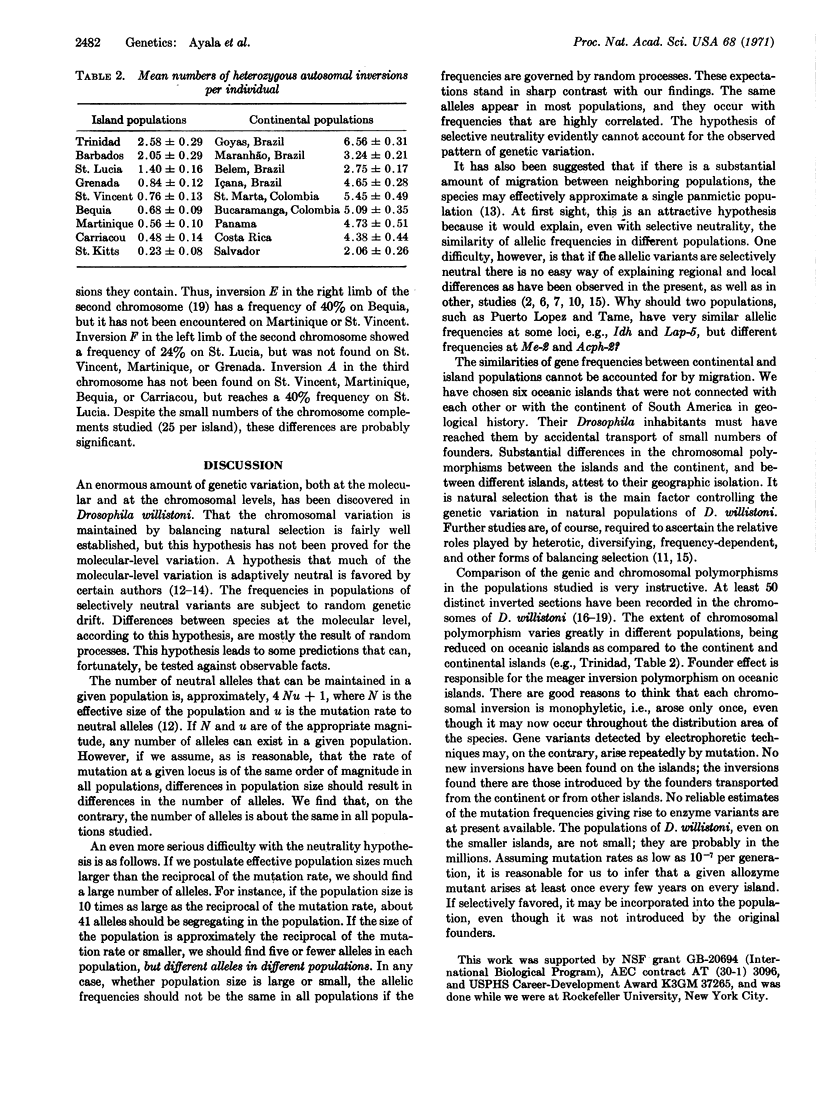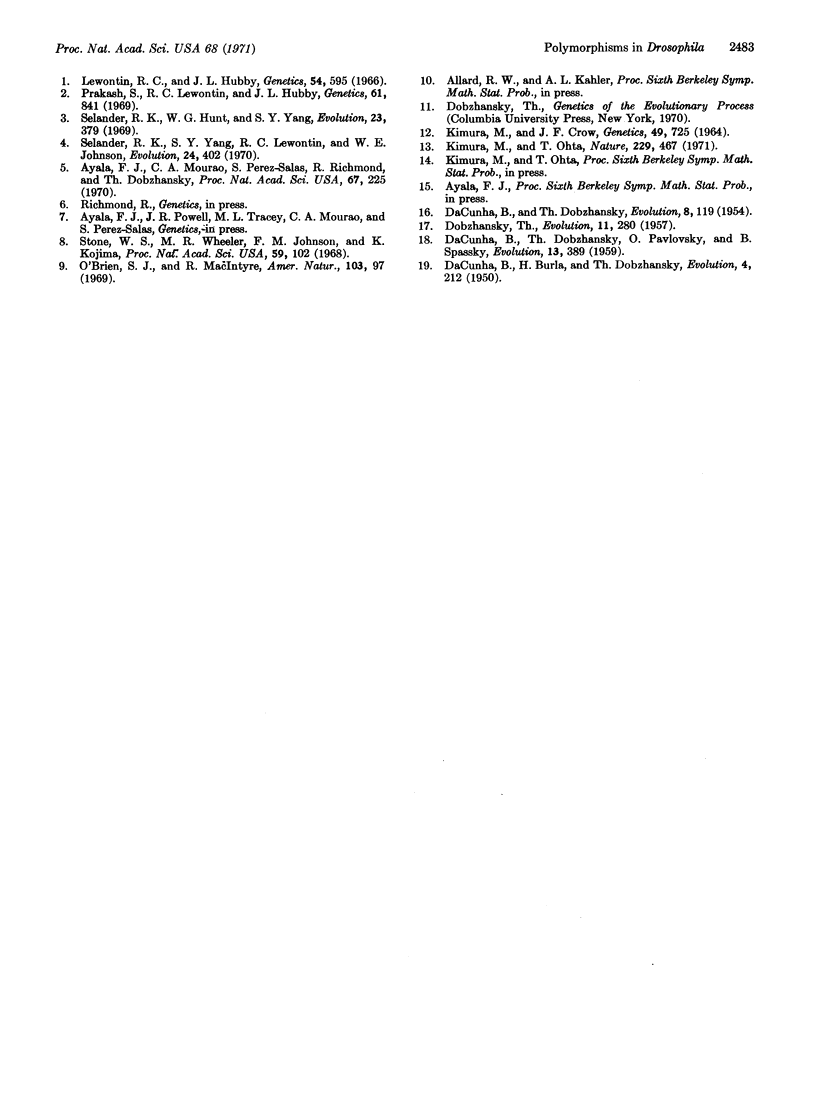Abstract
A comparative study of genic allozyme and chromosomal polymorphisms in four continental (South American) and six oceanic island (West Indies) populations of Drosophila willistoni has been made. The pattern of genic polymorphism is closely similar in all populations. Although regional and local differences in gene frequencies are found, generally the same alleles occur at high, intermediate, and low frequencies in all populations. An average individual is heterozygous at 18.4 and 16.2% of its loci in the continental and island populations, respectively. By contrast, chromosomal polymorphism is sharply reduced on the islands compared to most continental populations, and some chromosomal inversions are more frequent on some islands than on others. The observations are not compatible with the hypothesis that most of the gene variants are adaptively neutral. Balancing natural selection is responsible for most of the genic polymorphism in natural populations of D. willistoni.
Keywords: Colombia, West Indies, natural selection, chromosome inversions, isozymes, starch-gel electrophoresis
Full text
PDF



Selected References
These references are in PubMed. This may not be the complete list of references from this article.
- Ayala F. J., Mourão C. A., Pérez-Salas S., Richmond R., Dobzhansky T. Enzyme variability in the Drosophila willistoni group. I. Genetic differentiation among sibling species. Proc Natl Acad Sci U S A. 1970 Sep;67(1):225–232. doi: 10.1073/pnas.67.1.225. [DOI] [PMC free article] [PubMed] [Google Scholar]
- KIMURA M., CROW J. F. THE NUMBER OF ALLELES THAT CAN BE MAINTAINED IN A FINITE POPULATION. Genetics. 1964 Apr;49:725–738. doi: 10.1093/genetics/49.4.725. [DOI] [PMC free article] [PubMed] [Google Scholar]
- Kimura M., Ohta T. Protein polymorphism as a phase of molecular evolution. Nature. 1971 Feb 12;229(5285):467–469. doi: 10.1038/229467a0. [DOI] [PubMed] [Google Scholar]
- Lewontin R. C., Hubby J. L. A molecular approach to the study of genic heterozygosity in natural populations. II. Amount of variation and degree of heterozygosity in natural populations of Drosophila pseudoobscura. Genetics. 1966 Aug;54(2):595–609. doi: 10.1093/genetics/54.2.595. [DOI] [PMC free article] [PubMed] [Google Scholar]
- Prakash S., Lewontin R. C., Hubby J. L. A molecular approach to the study of genic heterozygosity in natural populations. IV. Patterns of genic variation in central, marginal and isolated populations of Drosophila pseudoobscura. Genetics. 1969 Apr;61(4):841–858. doi: 10.1093/genetics/61.4.841. [DOI] [PMC free article] [PubMed] [Google Scholar]
- Stone W. S., Wheeler M. R., Johnson F. M., Kojima K. I. Genetic variation in natural island populations of members of the Drosophila nasuta and Drosophila ananassae subgroups. Proc Natl Acad Sci U S A. 1968 Jan;59(1):102–109. doi: 10.1073/pnas.59.1.102. [DOI] [PMC free article] [PubMed] [Google Scholar]


